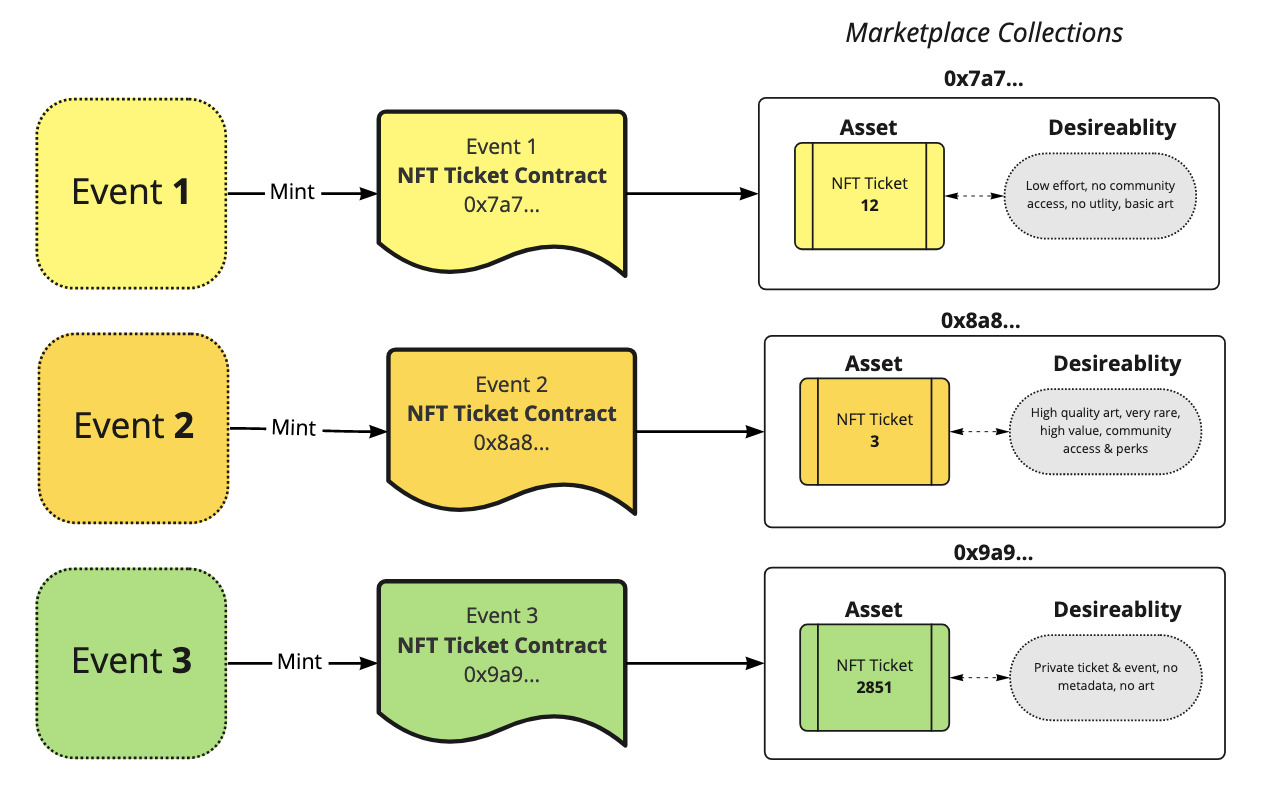Routing to a Ticket
Locating a ticket on OPN Ticketing Ecosystem can be done using three components:
- The blockchain network it is issued on, e.g. "POLYGON".
- The index of the event it belongs to, e.g. "2".
- The index of the NFT within that event, e.g. "3"
Bringing those three values together creates a composite key for each unique ticket knows as the nftId and this is guaranteed to be unique across all tickets on all blockchain networks. Using the example above would yield a complete nftId of POLYGON-2-3, meaning this is the third NFT ticket, on the second event, on the Polygon network.

Data heirarchy of Blockchain > Event > Ticket (NFT)
Upon success confirmation, the Actions endpoint returns both the complete nftId as well as the native smart contract address within the eventAddress field. It is this event address that is the most useful for composition with third-party tooling.
Interacting with an Event Contract
NFT collections are defined by the smart contract address that created the NFT and because each real-world event is created on-chain with its own unique smart contract address, keeping NFT collections for each separate event is straightforward.
For example, if an action returns an eventAddress of 0x3F2FBa6028f833E17C8087c385A4Ef4fc52F62bf on the Polygon network, then this can be used to:
- View the event directly on PolygonScan.
- Browse the NFT collection on OpenSea.
- Create a space on Snapshot, to allow NFT ticket holders to vote on proposals.
- Offer private community & discussion forums to attendees using CollabLand.
Web3 is known for its composability, and because each ticket issued on OPN Ticketing Ecosystem is compatible to the ERC-721 standard, it becomes easy to 'plug-in' to emerging platforms and offer a more engaging pre-and-post-event fan experience.
